Not an answer - just documenting some research to save others some time...
I can repro the issue here with the following code:
$xl = new-object -com excel.application;
$xl.Visible = $true;
$workbook = $xl.Workbooks.Add();
$worksheet = $workbook.Worksheets.Item(1);
$worksheet.Range("A1") = "aaa|111";
$worksheet.Range("A2") = "bbb|222";
$worksheet.Range("A3") = "ccc|333";
$worksheet.Range("A4") = "ddd|444";
$worksheet.Range("A5") = "eee|555";
$worksheet.Range("A6") = "fff|666";
which builds a new spreadsheet like this:

If you then run the following it will parse the contents of column A and put the results into columns B and C:
$range = $worksheet.Range("A:A");
$target = $worksheet.Range("B1");
# XlColumnDataType enumeration
# see https://learn.microsoft.com/en-us/office/vba/api/excel.xlcolumndatatype
$xlTextFormat = 2;
# XlTextParsingType enumeration
# see https://learn.microsoft.com/en-us/office/vba/api/excel.xltextparsingtype
$xlDelimited = 1;
# XlTextQualifier enumeration
# https://learn.microsoft.com/en-us/office/vba/api/excel.xltextqualifier
$xlTextQualifierNone = -4142;
$var = (1,$xlTextFormat),(2,$xlTextFormat),(3,$xlTextFormat),(4,$xlTextFormat),(5,$xlTextFormat),(6,$xlTextFormat);
# parse the values in A1:A6 and puts the values in a 2-dimensional array starting at B1
# see https://learn.microsoft.com/en-us/office/vba/api/excel.range.texttocolumns
$result = $range.TextToColumns(
$target, # Destination
$xlDelimited, # DataType
$xlTextQualifierNone, # TextQualifier
$false, # ConsecutiveDelimiter
$false, # Tab
$false, # Semicolon
$false, # Comma
$false, # Space
$true, # Other
"|", # OtherChar
$var # FieldInfo
);
which then looks like this:

However, if you change the declaration for $var to
$var = 1..6 | % { ,@($_, $xlTextFormat) };
you get the following error:
OperationStopped: The remote procedure call failed. (0x800706BE)
and the Excel instance terminates.
So there's something different about these two declarations:
$var = (1,$xlTextFormat),(2,$xlTextFormat),(3,$xlTextFormat),(4,$xlTextFormat),(5,$xlTextFormat),(6,$xlTextFormat);
$var = 1..6 | % { ,@($_, $xlTextFormat) };
but what that is eludes me :-S

